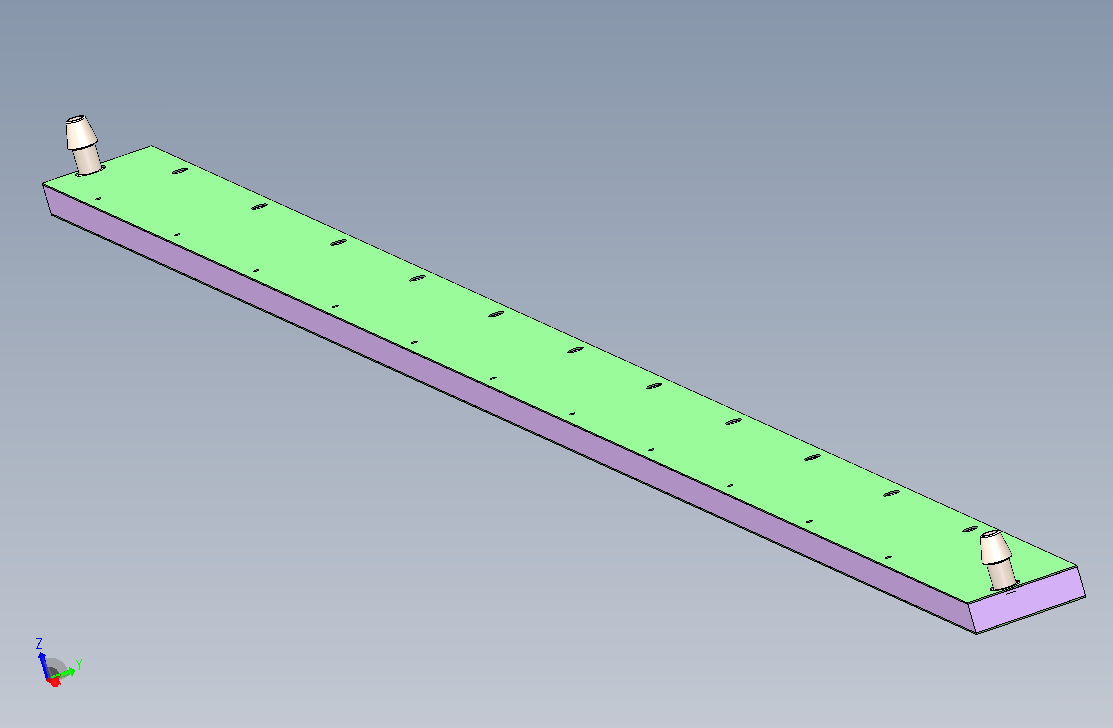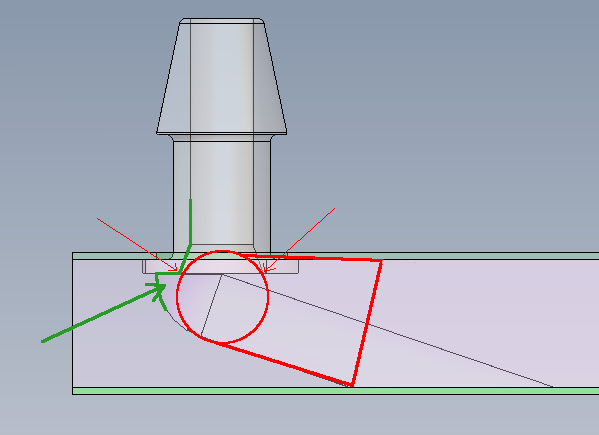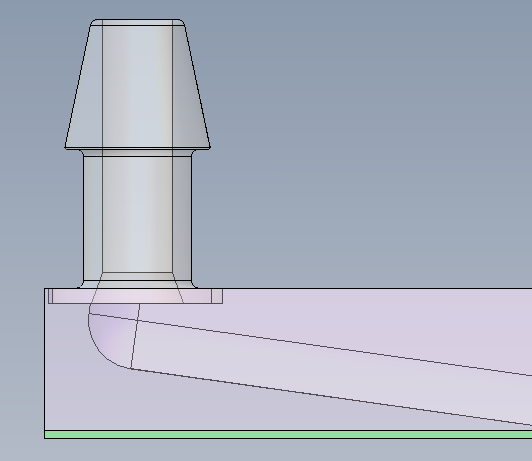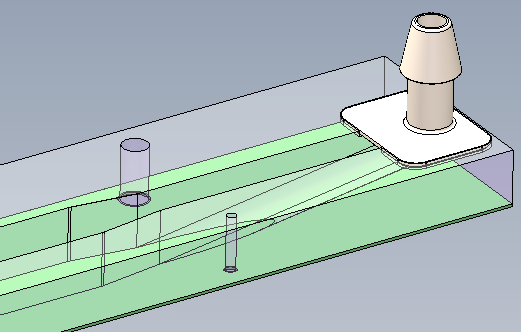Click for a bigger version-->

Click for a bigger version-->

Click for a bigger version-->

on a disk
Click for a bigger version-->

The test setup consisted of a CO2 gas bottle, a pressure reducer and precision pressure gauge, followed by a 2-liter water reservoir, marked at 250cc intervals, followed by the test channel and a drain. Time (in seconds) was marked as the water level fell past these marks. The nominal operating pressure drop is 20 psi.
Raw data, 2 runs per pressure setting:
10 psi 20 psi 30 psi 40 psi
--------- --------- --------- ---------
:18 :58 :15
:12 :08 :10 :18 :25 :04 :21
:18 :41 :17 :18 :26 :32 :10 :28
:29 :52 :25 :26 :32 :38 :16 :34
:39 :04 :33 :35 :39 :45 :22 :40
:51 :17 :40 :43 :46 :52 :29 :46
:02 :28 :49 :51 :53 :58 :35 :52
:14 :39 :56 :59 :58 :05 :41
--------- --------- --------- ---------
21.8 cc/sec 29.8 cc/sec 37.4 cc/sec 40.6 cc/sec
There is a weak dependence on pressure, with
flow ~= ( 15.5 + 0.63*psi ) cc/sec
(plot to follow)
In the 2007 Hytec design report, page 40, the flow rate is set at 14cc/sec for #M HFE7200. for a estimated pressure drop of 1.7 psi per half-disk, including barbs. This is based on a power dissipation of 100 uW/channnel.
